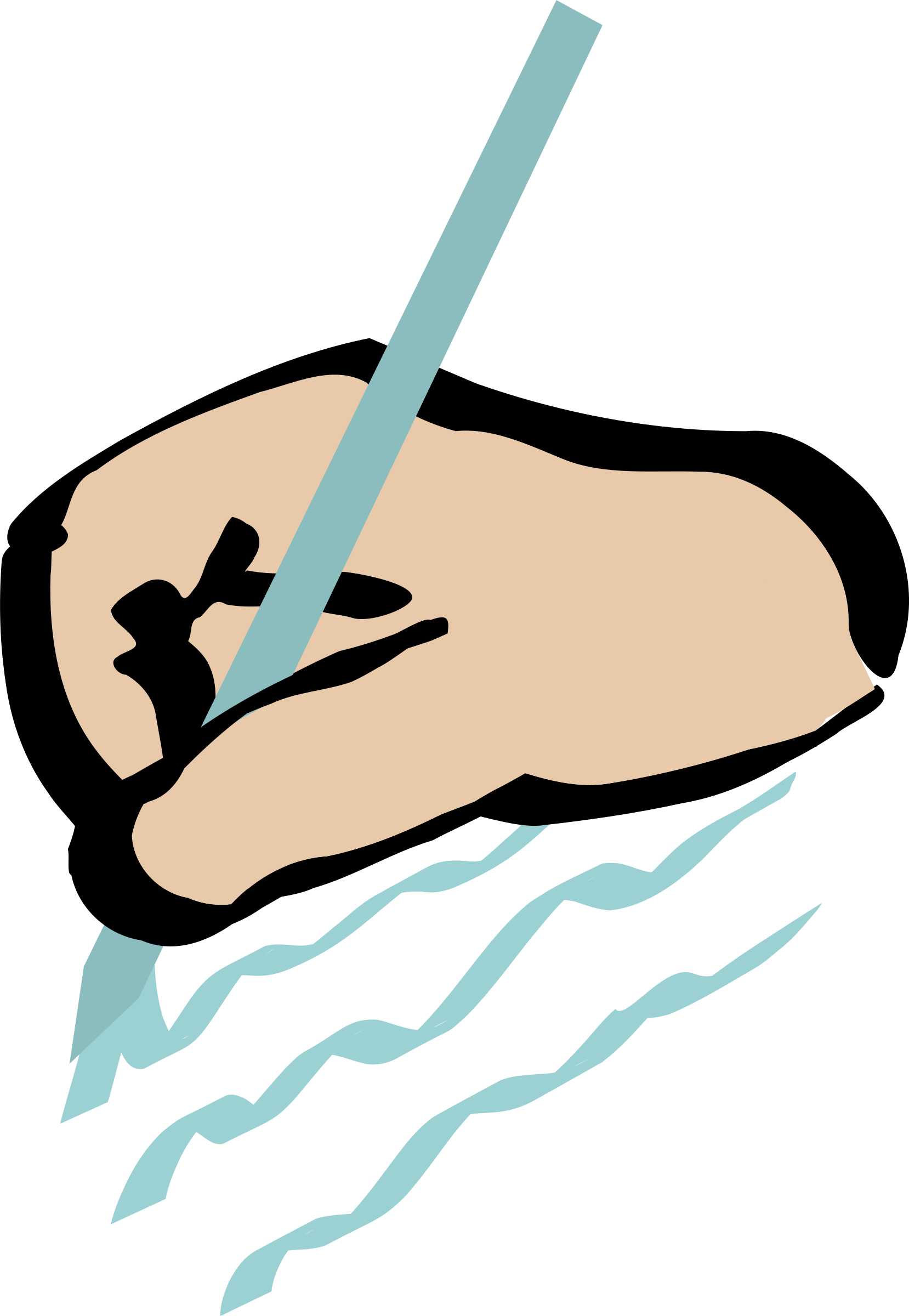 Writing is a journey, not a destination. It’s about the process of putting words together to create something new and original, something thought-provoking, something that will make readers laugh, cry or shake their heads in disbelief. For your students, you are the guide that will help them find their own direction to follow and define their own writing goals to achieve. Teaching writing as a process, not merely a means to an end, is the key to showing them how to navigate language on their own. The following tips will help ensure the lesson is as engaging as it is unforgettable.
Writing is a journey, not a destination. It’s about the process of putting words together to create something new and original, something thought-provoking, something that will make readers laugh, cry or shake their heads in disbelief. For your students, you are the guide that will help them find their own direction to follow and define their own writing goals to achieve. Teaching writing as a process, not merely a means to an end, is the key to showing them how to navigate language on their own. The following tips will help ensure the lesson is as engaging as it is unforgettable.
 Tip #1: Practice Writing Regularly
Tip #1: Practice Writing Regularly
 As Ray Bradbury always said, the best way to become a better writer is to write every day. Whether or not your elementary students might be destined to write the next Fahrenheit 451, encouraging regular practice is the number one way to improve your students’ skills and build both a longer attention span and a sense of flow.
As Ray Bradbury always said, the best way to become a better writer is to write every day. Whether or not your elementary students might be destined to write the next Fahrenheit 451, encouraging regular practice is the number one way to improve your students’ skills and build both a longer attention span and a sense of flow.
Writing, especially for young authors, really is a lot like riding a bike. They may not forget, once taught, how to hold a pencil or write a legible sentence, but trying to write a long response or full-blown essay after a long break can feel as unfamiliar and frustrating as those first shaky pedal rotations after leaving a bike locked in the garage all winter long. Keep their writing hands from getting rusty by penciling in a little practice time every day!
 Tip #2: Write One Step at a Time
Tip #2: Write One Step at a Time
 Just like any journey, the writing process is best enjoyed when taken at an even pace, one step at a time. Walking beside your students as they work through each separate stage of the writing process gives them time to better process and internalize the things they’re learning along the way, while simultaneously giving you a clearer picture of both their strengths and what they struggle with at each individual step. This, in turn, allows you to help them play to those strengths while addressing the problems they’re having without having to play the guessing game to figure out what exactly has been stumping them.
Just like any journey, the writing process is best enjoyed when taken at an even pace, one step at a time. Walking beside your students as they work through each separate stage of the writing process gives them time to better process and internalize the things they’re learning along the way, while simultaneously giving you a clearer picture of both their strengths and what they struggle with at each individual step. This, in turn, allows you to help them play to those strengths while addressing the problems they’re having without having to play the guessing game to figure out what exactly has been stumping them.
This approach to teaching the writing process is especially helpful for younger students who may have more difficulty focusing on a single assignment for long periods of time. You can easily break the process down into short, bite-sized lessons revolving around one stage at a time, so that the first lesson is about brainstorming, the second is about rough drafts, the third about editing strategies—and so on.
Are you Enjoying this Content?
 Tip #3: Experiment With Different Writing Strategies
Tip #3: Experiment With Different Writing Strategies
 It’s tempting to want to focus on only the very best writing strategies to teach your elementary students, but in truth, there is no one strategy to rule them all. Some will work better for certain kids than for others, and sometimes certain methods will be better suited to certain writing styles, topics or formats than others. Rather than give all of your (and your students’) energy to a select few techniques, foster a more creative atmosphere by allowing your students to experiment with a wide variety.
It’s tempting to want to focus on only the very best writing strategies to teach your elementary students, but in truth, there is no one strategy to rule them all. Some will work better for certain kids than for others, and sometimes certain methods will be better suited to certain writing styles, topics or formats than others. Rather than give all of your (and your students’) energy to a select few techniques, foster a more creative atmosphere by allowing your students to experiment with a wide variety.
This helps your students grow and flourish as writers by allowing them each to find the strategies that play to their individual strengths and help make their writing shine. It also opens their minds up to the idea that, just like any problem (outside of math class) might have more than one solution, so too may there be a number of good approaches to responding to any one writing prompt. It’s an invitation to thinking outside of the box and the perfect way for you, as their teacher, to instill in them a healthy sense of curiosity.
 Tip #4: Explore the “Why” of Writing
Tip #4: Explore the “Why” of Writing
 When teaching the writing process to elementary students, there’s one important question that needs to be discussed early and often: “Why?” The purposes behind each writing form, from expository to narrative to opinion essays, is of course important, but it’s also vital to go beyond that to delve into what significance their writing could have outside of the classroom. Are your students practicing nonfiction writing? Talk about how journalism, reference books and other examples have helped people make better, more educated choices in their lives. Learning about persuasive writing? Show them how a well-formed argument can change the world.
When teaching the writing process to elementary students, there’s one important question that needs to be discussed early and often: “Why?” The purposes behind each writing form, from expository to narrative to opinion essays, is of course important, but it’s also vital to go beyond that to delve into what significance their writing could have outside of the classroom. Are your students practicing nonfiction writing? Talk about how journalism, reference books and other examples have helped people make better, more educated choices in their lives. Learning about persuasive writing? Show them how a well-formed argument can change the world.
There’s also a third why that should be explored—the personal, individual “why” that motivates your students to write. As their guide, it’s your not your job to answer this question for them, but to help them answer it for themselves. It’s never just about getting a good grade or passing a class. Writing can teach them more about the things they love, or about themselves. It can show them how to communicate their ideas more clearly, and share them with a broader audience. It can help them be better students, and set them up for a more successful future. It could be the path to discovering a passion and building a career, or merely to cultivating a fun hobby to enjoy on the side. Illuminate the possibilities for them, then let them decide their own truths.
The Process of Publishing Your Students’ Writing
While much can be learned from just about any writing assignment, perhaps the best way to teach the writing process to elementary students is to tie it all together in the form of a classbook project. Creating and publishing a book together illustrates how writing works outside of the classroom, as well as teaching real-world skills like teamwork, dedication and long-term goal setting. More than that, it allows your students to experience the full narrative of the writing process, all the way from topic brainstorming to holding their final, published book in their hands and feeling, perhaps for the first time in their lives, like “real authors” who are capable of achieving anything. It’s a feeling—and a lesson—they won’t soon forget.
For more teaching tips, writing activities and other free educational resources, check out our online teacher’s lounge, and sign up for your free publishing kit today!
Image sources: Lead Image via Shutterstock; Images 1, 2, 3, 4 via OpenClipart.org





